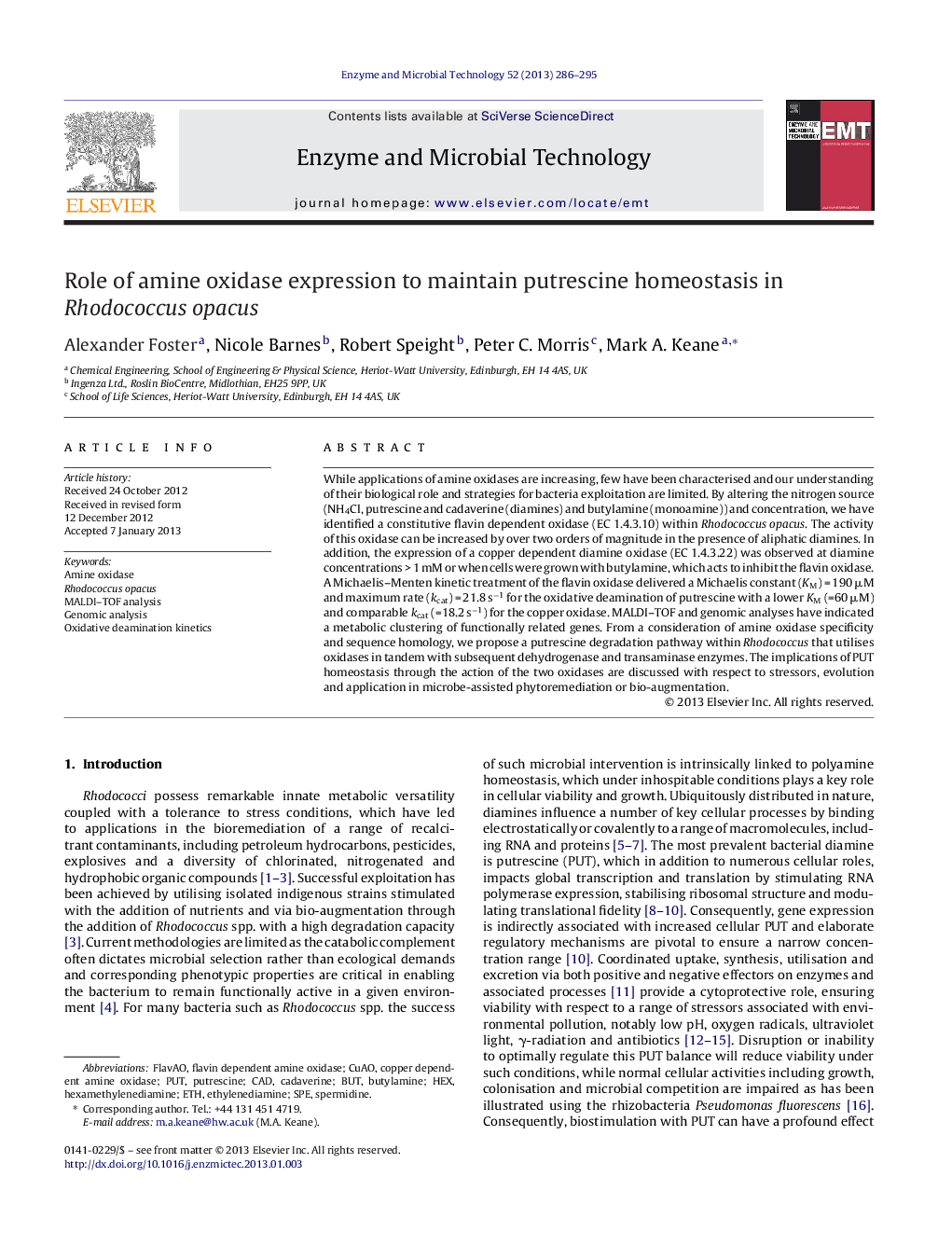| Article ID | Journal | Published Year | Pages | File Type |
|---|---|---|---|---|
| 17374 | Enzyme and Microbial Technology | 2013 | 10 Pages |
While applications of amine oxidases are increasing, few have been characterised and our understanding of their biological role and strategies for bacteria exploitation are limited. By altering the nitrogen source (NH4Cl, putrescine and cadaverine (diamines) and butylamine (monoamine)) and concentration, we have identified a constitutive flavin dependent oxidase (EC 1.4.3.10) within Rhodococcus opacus. The activity of this oxidase can be increased by over two orders of magnitude in the presence of aliphatic diamines. In addition, the expression of a copper dependent diamine oxidase (EC 1.4.3.22) was observed at diamine concentrations > 1 mM or when cells were grown with butylamine, which acts to inhibit the flavin oxidase. A Michaelis–Menten kinetic treatment of the flavin oxidase delivered a Michaelis constant (KM) = 190 μM and maximum rate (kcat) = 21.8 s−1 for the oxidative deamination of putrescine with a lower KM (=60 μM) and comparable kcat (=18.2 s−1) for the copper oxidase. MALDI–TOF and genomic analyses have indicated a metabolic clustering of functionally related genes. From a consideration of amine oxidase specificity and sequence homology, we propose a putrescine degradation pathway within Rhodococcus that utilises oxidases in tandem with subsequent dehydrogenase and transaminase enzymes. The implications of PUT homeostasis through the action of the two oxidases are discussed with respect to stressors, evolution and application in microbe-assisted phytoremediation or bio-augmentation.
Graphical abstractFigure optionsDownload full-size imageDownload as PowerPoint slideHighlights► Diamine metabolism in Rhodococcus opacus by copper and flavin amine oxidases. ► Dynamic activity probed by varying exogenous nitrogen source and concentration. ► Michaelis–Menten kinetic analysis of oxidase efficiency in oxidative deamination. ► Metabolic clustering of functionally related enzymes demonstrated on the genome. ► Proposed putrescine degradation pathway that utilises amine oxidases.
